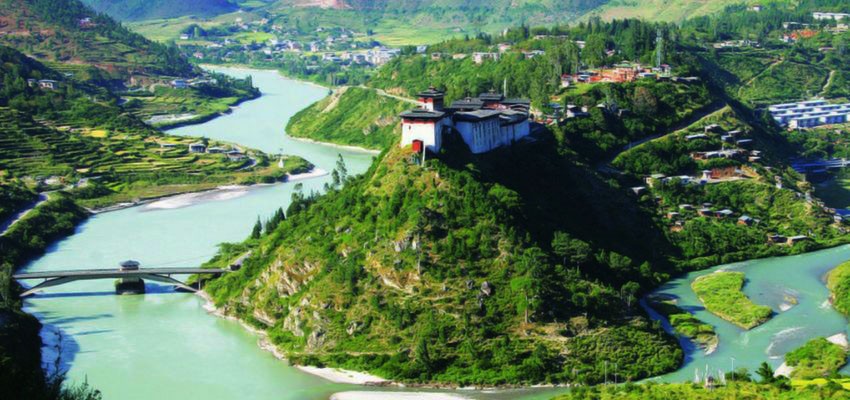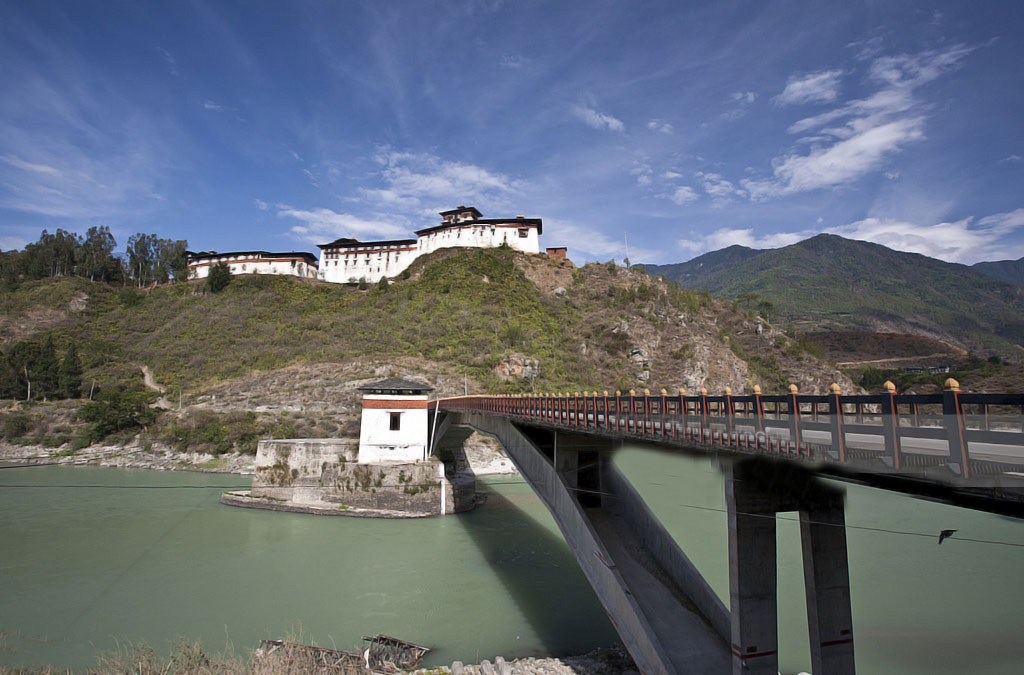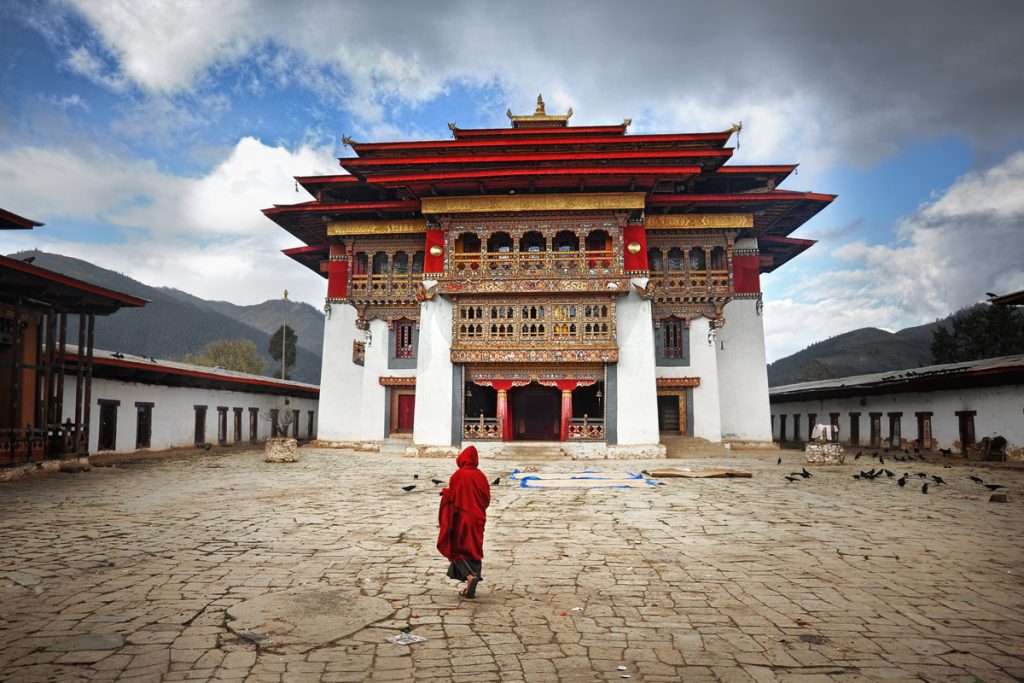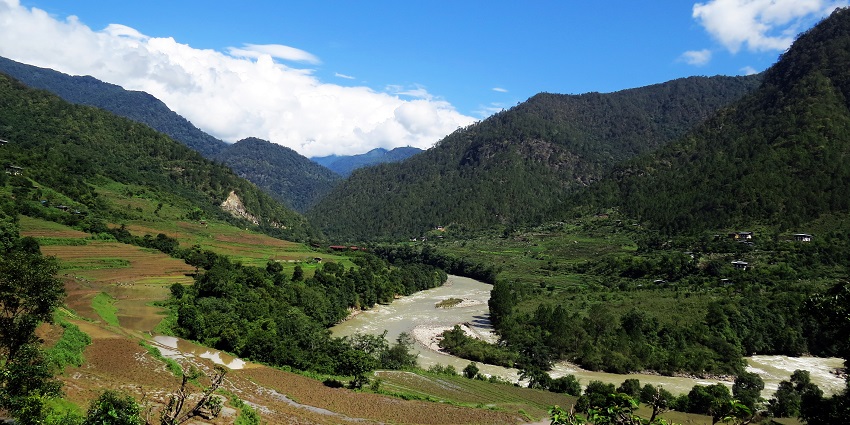
Wangdue Phodrang
It is one of Bhutan’s largest districts, is a land of rich history, dramatic landscapes, and cultural significance. Situated at the crossroads of central and western Bhutan, it offers travelers an incredible mix of historical landmarks, spiritual sanctuaries, and breathtaking natural beauty. From ancient fortresses and high-altitude valleys to pristine forests teeming with wildlife, Wangdue Phodrang promises an unforgettable experience for every traveler.
Wangdue Phodrang is a perfect blend of history, culture, and nature, making it one of Bhutan’s most diverse and rewarding travel destinations. Whether you are a history buff, adventure enthusiast, spiritual seeker, or wildlife lover, Wangdue Phodrang has something special to offer.

Wangdue Phodrang Dzong
Perched on a ridge at the confluence of the Punatsangchhu and Dangchhu rivers, Wangdue Phodrang Dzong is a majestic fortress that played a crucial role in Bhutan’s history. Built in 1638 by Zhabdrung Ngawang Namgyal, the unifier of Bhutan, the dzong served as an administrative and monastic center, protecting the western region from external invasions.
Unfortunately, the dzong was tragically destroyed by fire in 2012, but it has been restored to its former glory. It serves as an important religious and administrative landmark, offering visitors insight into Bhutanese architecture, history, and governance.

Phobjikha Valley (Gangtey Valley)
Phobjikha Valley, a valley like no other, often referred to as Gangtey Valley. It is one of Bhutan’s most stunning glacial valleys, located at an altitude of about 3,000 meters. This wide, open valley is known for its pristine landscapes, rolling meadows, and lush pine forests, making it an excellent destination for nature lovers and photographers.
One of the valley’s most famous residents is the black-necked crane, a rare and endangered bird that migrates here from Tibet during the winter months (October to February). The arrival of these birds is celebrated every November during the Black-Necked Crane Festival, a vibrant event that features traditional mask dances, folk songs, and educational programs about conservation.
Visitors can explore the valley by hiking along the Gangtey Nature Trail, which offers breathtaking views of the valley, rivers, and traditional Bhutanese villages. The valley is also home to traditional farmhouses, allowing travelers to experience rural Bhutanese life firsthand.

Gangtey Monastery (Gangtey Goenpa)
Perched on a hilltop overlooking Phobjikha Valley, the Gangtey Monastery is an important Nyingma Buddhist monastery with a history dating back to the 17th century. Founded by Gyalse Pema Thinley, the grandson of the great saint Pema Lingpa, the monastery is considered one of the most important centers of Buddhist learning and meditation in Bhutan.
The monastery is a stunning example of traditional Bhutanese architecture, featuring intricate wood carvings, ancient murals, and a peaceful courtyard where monks engage in daily prayers. Visitors can also witness religious ceremonies, interact with monks, and learn about Bhutanese Buddhist traditions.

Jigme Dorji National Park – A Biodiversity Hotspot
Part of Jigme Dorji National Park, Bhutan’s second-largest protected area, falls within Wangdue Phodrang. This vast park is a haven for wildlife and nature enthusiasts, covering diverse ecosystems that range from subtropical forests to alpine meadows.
The park is home to some of Bhutan’s most iconic wildlife, including:
• Snow leopards – The elusive big cat of the Himalayas
• Takin – Bhutan’s national animal
• Red pandas – Small, tree-dwelling mammals found in high-altitude forests
• Blue sheep and Himalayan musk deer – Prey species for snow leopards
• Over 300 species of birds, including raptors and migratory species
For adventure seekers, the park offers several hiking and trekking routes, providing breathtaking views of
snow-capped peaks, glacial rivers, and ancient forests.
Chat With Us